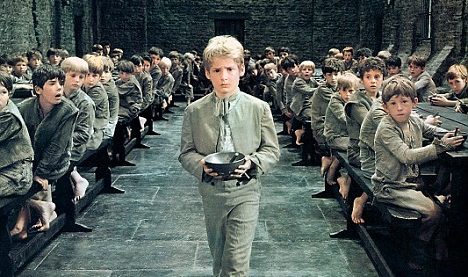Earlier this week Rookie Chariman of the Federal Reserve, Ben Bernanke,slashed federal interest rates one half-point, and there was much rejoicing throughout the land. Not to be outdone, retired Fed honcho Alan Greenspan embarked on an emergency book tour and, when asked his opinion of the bold and unexpected move, responded, “Whatever.”
By the time the point-cutting frenzy had subsided, the DOW was up 336 points, the largest single-day rise in nearly five years; the S&P 500, which, unlike the DOW, mixes letters and numerals with an ampersand, rose 43 points, or nearly 3%; and the Nasdaq also climbed nearly 3% with a 70-point surge. Meanwhile, the Philadelphia Eagles failed to cover the spread.
In addition to its impact on financial markets, tech stocks, utilities and Vegas sports books, this first federal rate cut in nearly four years will, according to Business Week, “allow business owners to pay themselves a bigger salary when they may have been scrimping.” Huzzah! And if you’re not a business-owner, short-seller, or hedge-funder, what does this mean to you? Only that the already piddling interest you’re earning on that passbook savings account just got piddlier.
On the bright side, where the glare can be blinding to the financially impaired, the rate cut is also expected to “restore consumer confidence” and therefore “spur more borrowing” — an oddly celebratory note, considering over-extended borrowing is what necessitated the rate-slashing brouhaha in the first place.
But with the euphoric rush of predatory lending practices dissipated in the gentle afterglow of a federal rate cut, most banks and mortgage lenders have come to their senses and decided once again to lend money only to people who don’t really need it. Placing the blame squarely where it belongs, on the backs of low-income borrowers who bought their snappy sales patter and fancy adjustable math, Countrywide Financial Corporation, the largest mortgage lender in the U.S., has proudly announced it is now out of the subprime mortgage business.
And who could blame them? Lending money to poor credit risks is simply a bad idea.
Unless that poor risk is Countrywide Financial Corporation, whose subprime lending practices led to its highest foreclosure rates in five years, forced thousands of layoffs, triggered a run on the bank not seen since Bedford Falls, and dumped their stock in the toilet like a used goldfish. So dire were the straits jacketing CFC, they contributed to and worsened a “global liquidity crisis,” to use the doomsday phrase breathlessly repeated by our hyper-ventilating media in recent weeks. So, top hat in hand, CFC went begging to the commercial paper and secondary mortgage markets — without success — before eventually panhandling more than $20 billion in financing from other banks, and a $2 billion equity investment from Bank of America.
Now fat with borrowed money they won’t be lending any time soon to those who might need it, Countrywide CEO Angelo Mozilo is feeling “very bullish” on the future. And why shouldn’t he? The flush and well-tanned Mozilo ranks #7 on the most recent Forbes 400 list with $142 million in annual “total compensation” (http://www.forbes.com/lists/2007/12/lead_07ceos_Angelo-R-Mozilo_7G33.html). Although it should be noted that after stockholder outcry over his enormous 2005 compensation, Mozilo did the responsible CEO thing and took a $1 million dollar pay cut. What a mensch!
So if your “consumer confidence” is soaring over this zippy federal rate cut, put your money where the big boys have: open a savings account with CFC, currently paying a whopping ONE-HALF PERCENT — the same as the federal rate cut! It’s kismet! (https://bank.countrywide.com/CWBRates.aspx?tab=sa).
